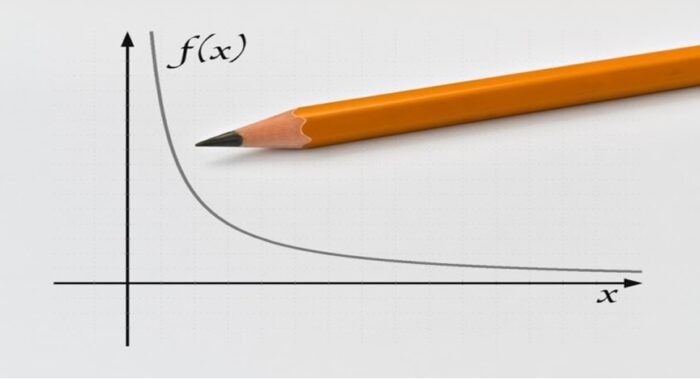In algebra, the ratio and proportions is widely used to solve various kinds of mathematical problems. It is based on ratios (p: q) & fractions (p/q). The fraction is a term or a way to write numbers in the form of p/q, where p & q are the integers and q is not equal to zero.
There are several kinds of problems in our daily life that are solved by using the ratio and proportions. In this article, we will study the definition, formula, types, and examples of proportion.
What is Proportion?
In algebra, an equation that is equal to two ratios is known as proportion. The proportion is a part from the whole of several things. The ratio plays a vital role in it because proportion is totally dependent on ratios.
In simple words, a proportion is the comparison of two numbers, fractions, or ratios. The set of ratios can be increasing or decreasing. When both sets are increasing or decreasing, it is called a direct proportion.
If the set of ratios is increasing and decreasing, in the same way, it is said to be inverse proportion. The set of ratios is separated by “: :” to denote a proportion. Proportions are also denoted with an equality sign “=” among the fractions.
For example, a bus that covers a distance of 35 kilometers per hour is equal to the distance covered by a car covering 90 kilometers per hour, that is, 35 kilometers/per hour = 85 kilometers/per hour.
The Formula of Proportion
You must be familiar with the equation of ratio to use the formula of proportion. Below is the general equation of the ratio.
a : b or a/b
Here, a & b are the integers. The ratio can be written in the form of a fraction by taking the first term of the ratio as a numerator and the second term as a denominator. In algebra, the first term of the ratio is known as antecedent.
The other term is known as consequent. The formula of the proportion can be written by using two sets of ratios or two ratios. Let the ratios be a : b & c : d. Write these ratios with the proportion sign “: :” between them.
a : b : : c : d
The formula of proportion can also be written in the form of fractions with an equality sign between them.
a/b = c/d
In proportion, there are two kinds of terms. The inner terms b & c are known as mean terms. The outer terms a & d are known as extreme terms.
Different methods to write the formula of proportion
Here are some methods or ways to write the formula of proportion.
- a/b = c/d ⇒ ad = bc
- a/b = c/d ⇒ b/a = d/c
- a/b = c/d ⇒ a/c = b/d
- a/b = c/d ⇒ (a + b)/b = (c + d)/d
- a/b = c/d ⇒ (a – b)/b = (c – d)/d
Types of Proportion
Proportion is of two types, that is, direct proportion & inverse proportion. Let’s discuss these types of proportions briefly.
1. Inverse proportion
The proportion in which an increase in the first term causes a decrease in the second term or a decrease in the first term causes an increase in the second term is called inverse proportion. In other words, a proportion that is not direct is known as an indirect proportion.
2. Direct proportion
The proportion in which an increase in the first term causes an increase in the second term or a decrease in the first term causes a decrease in the second term is said to be a direct proportion.
For example, if the speed of a car decreases, it covers less time in the fixed time.
How to solve the Problems of ratio & proportion?
The problems of ratios and proportion can be solved easily either by using formulas or a proportion calculator. This tool finds the result of the given problem in a fraction of seconds with steps.
Follow the below examples to learn how to solve the problems of proportion & ratios.
Example I
If 28 buses are required to bring the workers of a factory in a week, how many buses are required to bring the same number of workers in five days?
Solution
Step I: Write the given data of buses and days.
Buses required to bring the workers of a factory in a week = 28
Buses required to bring the workers of a factory in five days = x
Step 2: Write the formula of proportion and write the data of buses & days according to the formula.
a : b : : c : d
buses : days : : buses : days
28 : 7 : : x : 5
Step 3: Write the ratios in the form of fractions and put an equality sign between them.
28/7 = x/5
Step 4: Simplify the above expression to find the value of x.
28/7 = x/5
(28/7) * 5 = x
(4/1) * 5 = x
4 * 5 = x
X = 4 * 5
X = 20
Hence, 20 more buses are required to bring the same number of workers.
Buses required to bring the workers of a factory in five days = 28 + 20 =48
Example II
In a wooden box, there are 30 vegetables. From these 30 vegetables, 8 are carrots, 4 are tomatoes, 6 are cabbage, and 12 are turnips. Find the ratio of:
- Carrot to tomatoes
- Cabbage to total vegetables
- Turnip to tomatoes
- Cabbage to tomatoes
Solution
Step I: First, write the number of vegetables.
Total vegetables = 30
Tomato = 4
Carrot = 8
Cabbage = 6
Turnip = 12
Step II: Now, find the ratio of carrots to tomatoes.
Number of carrots = 8
Number of tomatoes = 4
The ratio is
8 : 4 ⇒ 4 : 2 ⇒ 2 : 1
or
8/4 ⇒ 4/2 ⇒ 2/1
Step III: Determine the ratio of cabbage to total vegetables.
Number of total vegetables = 30
Number of cabbage = 6
Subtract the total vegetables from cabbage to find the difference = 30 – 6 = 24
Now, the ratio is
6 : 24 ⇒ 3 : 12 ⇒ 1 : 4
or
6 / 24 ⇒ 3/12 ⇒ 1/4
Step IV: Now, find the ratio of turnips to tomatoes.
Number of turnips = 12
Number of tomatoes = 4
The ratio is
12 : 4 ⇒ 6 : 2 ⇒ 3 : 1
or
12/4 ⇒ 6/2 ⇒ 3/1
Step V: Now, find the ratio of cabbage to tomatoes.
Number of cabbage = 6
Number of tomatoes = 4
The ratio is
6 : 4 ⇒ 3 : 2
or
12/4 ⇒ 3/2
Summary
You can grab all the basics of ratio and proportions from this post. We have mentioned all the basics of proportion in this post. After reading the above post, you can easily solve any kind of problem related to ratios and proportions.















